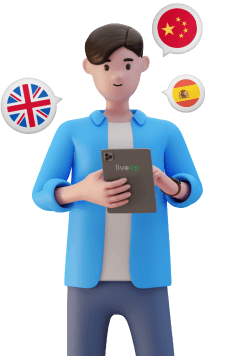
3 Ways to Keep Your Goals in Learning a Second Language
Here are three suggestions you can try in an effort to keep your goal and go from a Thought to Reality to Physical and keeping it first.

Get a FREE guide!
Want to sound like a native English speaker?
Get our free PDF with top tips that work.

Check your email!
Is Learning a Second Language Still a Priority?
You’ve decided on a specific goal and are determined to succeed. But, like many, you have other things come up that interfere with actually completing your goal. Say that your goal is to go for a walk every day. But the day you want to start, something comes up, and you can’t walk. So, you tell yourself that you will begin tomorrow. No doubt, something comes up the next day, and you become frustrated. So, you put off your goal yet another day. You soon realize that you are walking when you have the time, and when you don’t, you just accept the fact that you can’t, and you don’t. In between thoughts and days, you still hold on to the frustration. Yet, without realizing it, you are training yourself to accept defeat. You learn to accept the interference and the intrusion, and soon you no longer have walking as a goal. You may move on to a new goal or just leave it alone altogether.
Have you found that most of your decisions end up in the “I didn’t have time” file? How do you stop allowing other events to interrupt your goals? To stop your motivation? To control your direction in life? For many, learning a second language starts as being the top priority. We’re learning, and we’re excited. We are practicing by being active on apps and websites. We are writing down everything. We purchased new journals to keep notes, and our lists of YouTube channels or so long we can’t ever count them. It’s our goal, and nothing will stop us. But soon, we have work, kids, appointments, and so much more that interferes with our time that somehow, we are thinking more than doing. How do we get back to making it a priority?
Here are three suggestions you can try in an effort to keep your goal and go from a Thought to Reality to Physical and keeping it first.
STEP 1—Make sure that your goal is REALISTIC
What does that mean? It means to make sure that you can actually do what you want to do. Do you have the materials you need? Do you have the means to make it work? If your goal is going to the moon and you have no way to get there, you might want to change the goal. But if your goal is to walk every day because you already have the ability to walk, then that’s a great goal. It’s realistic! Now go through your mental checklist. Do you have good walking shoes? Appropriate clothing will allow you to be comfortable as you walk. Maybe you have a watch that will count the steps as you walk. Do you have a partner to walk with if you don’t like walking alone? Do you have a place or location where you can walk safely?
When it comes to learning a language, you can do the same thing. Do you know what language you want to learn? Do you have a reason for learning that goal? Do you have certain websites, social media pages, or apps that you really like because you are learning? If you do, great! You’ve just passed the first step. Having your goal was thought, but now it has become more REALISTIC.
STEP 2—Make sure you have TOOLS that work
Now that your goal is a reality check your tools. For walking, your tools would be your shoes, clothing, and your counter. Maybe a music app or something to listen to if it is safe to do so. Check them and make sure that they are comfortable. Be sure they work. The last thing you want to do is to stop every five minutes because the shoes are too tight. But you make adjustments, and you’re good to go! Now, back to your language goal. You check your tools. Your tablet is charged, and your apps are free or purchased, so you don’t stop midway. And the apps are really beneficial to you. You can review the material. You can practice with the app or website. You can stop and start or save information. Better yet, they have a way to communicate with the host so you can ask questions. It’s a true learning environment. So, your TOOLS work! You’re ready for the last step.
STEP 3—Make sure you ABSORB interference
What does this mean, and why is it the most important step you can do to stick with your goal? Well, when you are walking, and there’s a bump or obstacle in the way, what do you do? You go around it. You don’t allow an obstacle to stop you from walking. Regardless of the size, you continue to walk. Sometimes you might have to make a huge detour and go a different route. Or it may be something small as just moving to the side a little. And how does this apply to learning a language? It’ll call for the same maneuvers. Say that you study three times a week, but one morning you have an appointment. How do you ABSORB this interference? You take your TOOLS with you to the appointment. Any downtime you have to sit and wait, you use that time to review your material. If you have a podcast or something that could be played, you listen to it on your way. Writing your vocabulary from memory is a great practice to see if you remember what you reviewed. Take a notepad with you and when you can, think about the words or sentences you’ve been working on and try to write them from memory. Guess what! You’ve just ABSORB the interference by making it a part of your learning experience.
If you have to go to work or school and can’t walk that day for exercise, then use your downtime to take a one-minute walk. Walk about the building. Walk the stairs instead of the elevator. Take the bus instead of the car. You can absorb your interference by making it a part of your learning experience.
- So, the next time you set a goal, be sure to think about it and make sure it’s realistic.
- Then go through your checklist and make sure you have the right tools to make it beneficial.
- And last of all, don’t look at appointments, class, work, or anything as a hindrance to stop you. But see it as a moment to be absorbed and to be used in your language journey.
















